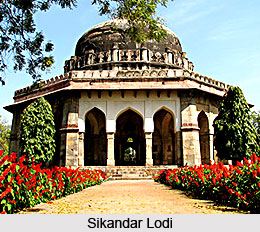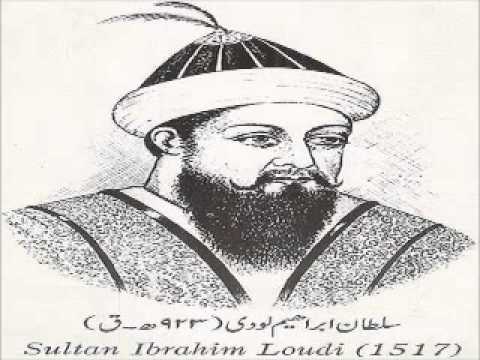- Home
- History of India
- Indian Dynasties
- Lodi Dynasty
Lodi Dynasty
Lodhi Dynasty: (1451-1526)
Quick facts:
Dynasty: Lodi Dynasty
Founder: Bahlul Lodi
Ruled from 1451-1526
Preceded by: Sayyid Dynasty
Succeeded by: Mughal dynasty
Important Rulers: Bahlul Lodi (1451-1489), Sikander Lodi ( 1489-1517), Ibrahim Lodi ( 17-1526)
Lodi Dynasty was the fifth and the final dynasty of Delhi Sultanate in India. It ruled from 1451 to 1526. Bahlul Lodhi was the founder of the Lodi dynasty. Three important rulers of this dynasty are Bahlul Lodi, Sikander Lodi and Ibrahim Lodi. This was the last dynasty of Delhi Sultanate and also it was called Pashtun dynasty.
Bahlul Lodi: (1451-1489)
Bahlul Lodi was the founder of the Lodi Dynasty. He ruled from 1451-1489. Bahlul Lodi was the nephew and son-in-law of Malik Sultan Shah Lodi who was the governor of Sirhind in Punjab, India. He was an Afghan noble and a brave soldier.
Bahlul lodi ascended the throne of Delhi Sultanate on 19th April 1451 after the last Sayyid ruler of Delhi Alauddin ALam Shah voluntarily renounced the throne in favor of Bahlul lodi. He tried to restore the glory of Delhi by conquering territories like Jaunpur, Rewail, Itawah, Mewar, and Gwalior. His most important conquest was Jaunpur.
Read More about Freedom fighters of India
Lodi was a tactful ruler who won over Afghan nobles by giving them Jagirs. He treated them as friends. Bahlul Lodi was an ardent Muslim follower. He offered his Namaz every day. Bahlul Lodhi died in 1489 AD. After his death his son Sikander Lodhi ascended the throne.
Sikander Lodhi of Lodi Dynasty

Sikander Lodhi succeeded his father and took over the reigns of the Lodi Dynasty. He ruled from 1489-1517 AD. He took the title as Sikander Shah and took over the reigns on 15th July 1489. He founded Agra in 1504. Sikander Lodi was the second son of Bahlul Lodhi. Barbak Shah was his eldest son.
He was the Viceroy of Jaunpur. Among the other two rulers, he was the most able ruler and good administrator. Sikander Lodi maintained good law and order. Sikander Lodi improved the economy and the revenue of the Lodi dynasty.
Check out more about Indian Independence Movement
Conquests:
Some of the important conquests during Sikander Lodi period were, Sikander defeated his own brother in Jaunpur and took control on it. He later moved to Bihar, Dholpur, Gwalior, Bidar etc. He entered into friendly relations with Bengal. To effectively control and Administer Biyana, koil, Gwalior and Dholpur Sikander laid the foundation of a new city of Agra in 1503 AD and made it as his army headquarters.
Update on coronavirus in India
Administration:
Sikander lodi was a good administrator. He kept a check on the nobles. The governors were ordered to receive Sultan Firman(order). He also made it compulsory that governors should submit their account of income and expenditure. The offenders were severely punished.
Very often Sikander disguised himself to take first hand information about the condition of his people and state and also to know the activities of Amirs and Ulemas. Sikander lodi was a very well versed scholar. He composed many poems in his language.
Read more about Mughal Architecture
Sikander Lodhi encouraged education among children. In each mosque he appointed one scholar, one preacher and one teacher. It is believed that around 70 scholars discussed academic and religious problems every night. Several scholarly works were translated from Sanskrit into Persian.
Sikander Lodi was a great patron of art, literature and music. He decorated the city of Agra with splendid and huge forts and buildings. The King enjoyed Shenai, a musical instrument. A musical note called Lahjat-I- Sikander shahi was composed during his reign. Sikander Lodi died in 1517 AD. His youngest son Ibrahim Lodi took control of the kingdom.
Ibrahim Lodhi of Lodi Dynasty

Ibrahim Lodhi (1517-1526)
Ibrahim Lodi, the youngest son of Sikander ascended the throne of the Lodi dynasty after the death of Sikander Lodhi. He was the last ruler of the Lodi dynasty and Delhi Sultanate. After facing strong resistance from Afghan nobles, Ibrahim Lodi restarted the dual system of governance.
He was defeated and killed in the Battle of Panipat by Babur’s army thus establishing the vast Mughal Empire in India.
Indian History is very interesting to read.
Fall of Lodi Dynasty
There are many reasons for the fall of the Lodi Dynasty. After Ibrahim Lodi took over the reigns of the dynasty he was busy fighting several Afghan nobles particularly Daulat Khan Lodi, governor of Punjab and Alam Khan Lodi who was the uncle of Ibrahim Lodi invited Babur to invade Delhi.
This was particularly done to take revenge on Ibrahim. Even though Ibrahim gave a strong and tough fight to Babur, Ibrahim was killed on the battlefield. This marked the end of the Lodi dynasty and Delhi Sultanate.
Danger and the threats posed by Rajput kings. Rana Sanga who was the leader of Mewar defeated the Lodi King in the Battle of Khatoli and in the battle of Dholpur between 1518-19. Rana Sanga also offered his support to Babur to defeat Ibrahim Lodi.
Another reason for the fall of the Lodi dynasty was the lack of a strong leader after Ibrahim Lodi. His uncle Alam Khan betrayed Ibrahim by supporting Mughals for invasion.
By the late 15th century the supply lines had collapsed. Earlier Deccan was the main trade route. With the collapse and failure of the specific trade route to cutting off supplies from the coast to the interior part of India.
The lodi’s suffered a lot due to the cutting of supplies and also they were not able to protect themselves if war would break out on any other trade routes and their trade declined. This led to bad economic conditions and fast the treasuries were drained out
Thus came to an end of the Lodi Dynasty and the beginning of Mughal Dynasty
Affiliate Disclosure:
If you make any purchase via a link on this site, I may receive a small commission with no added cost to you.


